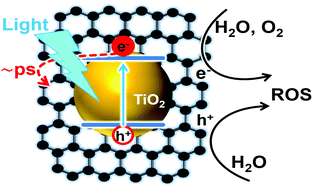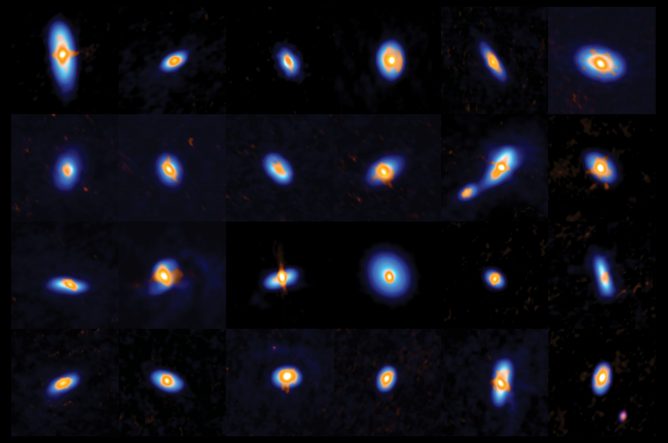(Smog-eating graphene composite reduces atmospheric pollution)
2019/12/3 欧州・グラフェンフラッグシップ
・欧州グラフェンフラッグシップが複数の大学や民間企業との協力で、大気中の窒素酸化物(Nox)を標準的なチタニアナノ粒子に比べて最大 70%多く分解する、グラフェン-チタニア光触媒を開発。
・同研究に参加した組織は、イタリア・ボローニャ大学、ミラノ工科大学、イタリア学術会議(CNR)、 National Enterprise for nanoScience and nanoTecnology (NEST)、イタルチェメンティ・ハイデルベルグ・セメントグループ、イスラエル工科大学、オランダ・アイントホーフェン工科大学および英国・ケンブリッジ大学。
・大気汚染問題は都市部や途上国で深刻さを増しており、世界保健機関(WHO)は死亡者の 9 人に 1 人が大気汚染に起因する疾病によるものと報告。その主な原因が自動車の排気ガスや工業からのNox や揮発性化合物等の有機汚染物質。
・ 同光触媒のグラフェン-チタニアナノ複合材料は、水と大気圧のみを用いてチタニアナノ粒子の存在下でグラファイトの液相剥離(グラフェン製造プロセス)のワンステッププロセスで作製。同複合材をホスト材料の表面にコーティングすると、大気中から受動的に汚染物質を除去。グラフェンはチタニアのような触媒の光触媒挙動を向上させ、コーティングしたセメント等の機械的性質を高める。
・ 同複合材を Nox で試験してその光分解効果を測定したところ、標準的なチタニアと比べて窒素酸化物を光分解する能力の向上を確認。さらに、VOC 汚染物質のモデルとしてローダミン B(自動車等が排出する汚染物質に分子構造が類似)を使用した試験では、UV 照射下の水中で、チタニア単体に比べてローダミン B を 40%より多く分解した。
・ コンクリートを始め様々な材料に使用できる同複合材は、低保守で太陽光のみをエネルギーとする環境に優しい技術だが、グラフェンを安価に大量生産する技術開発が商業規模での利用に向けた課題。また、光触媒と母材間の相互作用のさらなる促進と、屋外環境での光触媒の安定性維持ついての研究が必要。
・ 超高速過渡吸収分光法では、チタニアからグラフェン片への電子移動過程を明示。電荷再結合の速度が低減して反応種の光生成効率が向上。汚染物質分子をより多く分解できる。
・イタルチェメンティでは、導電性グラフェンコンクリート複合材も開発中(2019 年 2 月 Mobile World Congress にて展示)。電流の放熱による暖房機能を提供する。また、コンクリート構造物の応力やひずみを検出しながら構造上の欠陥を監視して、健全性が危うい場合に警告信号を発信するセルフセンシング型コンクリートとして、未来のスマートシティに向けたイノベーションの可能性を拓く。
https://graphene–flagship.eu/news/Pages/Smog–eating–graphene–composite–reduces–
URL:atmospheric–pollution.aspx
(関連情報)
Nanoscale 掲載論文(アブストラクトのみ:全文は有料))
Photocatalytic activity of exfoliated graphite–TiO2 nanoparticle composites
URL: https://pubs.rsc.org/en/content/articlepdf/2019/nr/c9nr06760d
<NEDO海外技術情報より>
Abstract
We investigate the photocatalytic performance of composites prepared in a one-step process by liquid-phase exfoliation of graphite in the presence of TiO2 nanoparticles (NPs) at atmospheric pressure and in water, without heating or adding any surfactant, and starting from low-cost commercial reagents. These show enhanced photocatalytic activity, degrading up to 40% more pollutants with respect to the starting TiO2-NPs, in the case of a model dye target, and up to 70% more pollutants in the case of nitrogen oxides. In order to understand the photo-physical mechanisms underlying this enhancement, we investigate the photo-generation of reactive species (trapped holes and electrons) by ultrafast transient absorption spectroscopy. We observe an electron transfer process from TiO2 to the graphite flakes within the first picoseconds of the relaxation dynamics, which causes the decrease of the charge recombination rate, and increases the efficiency of the reactive species photo-production.




